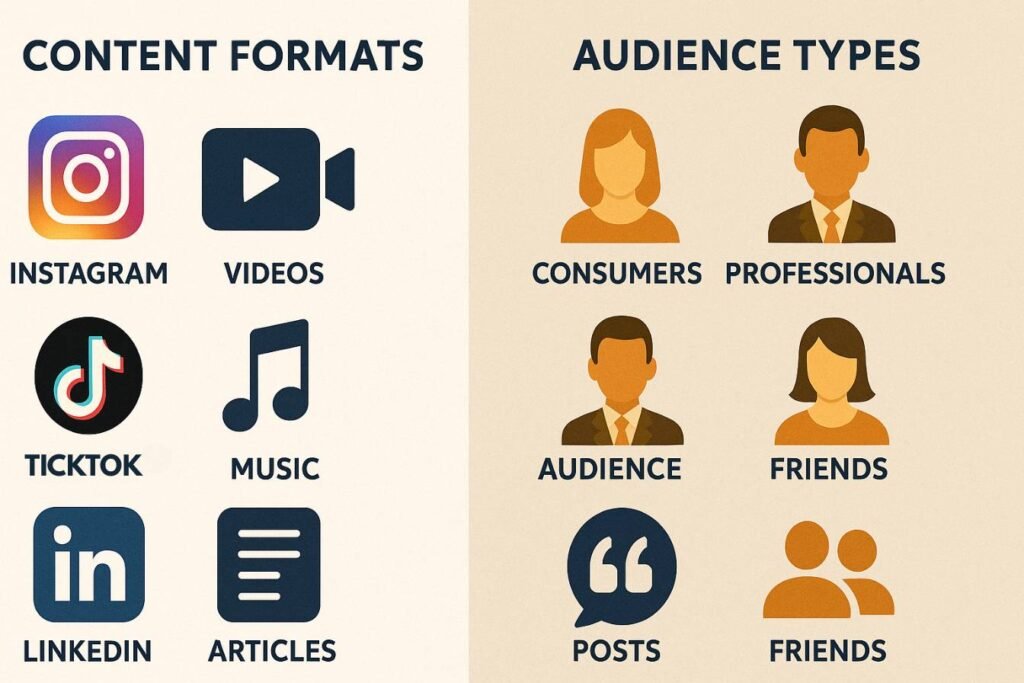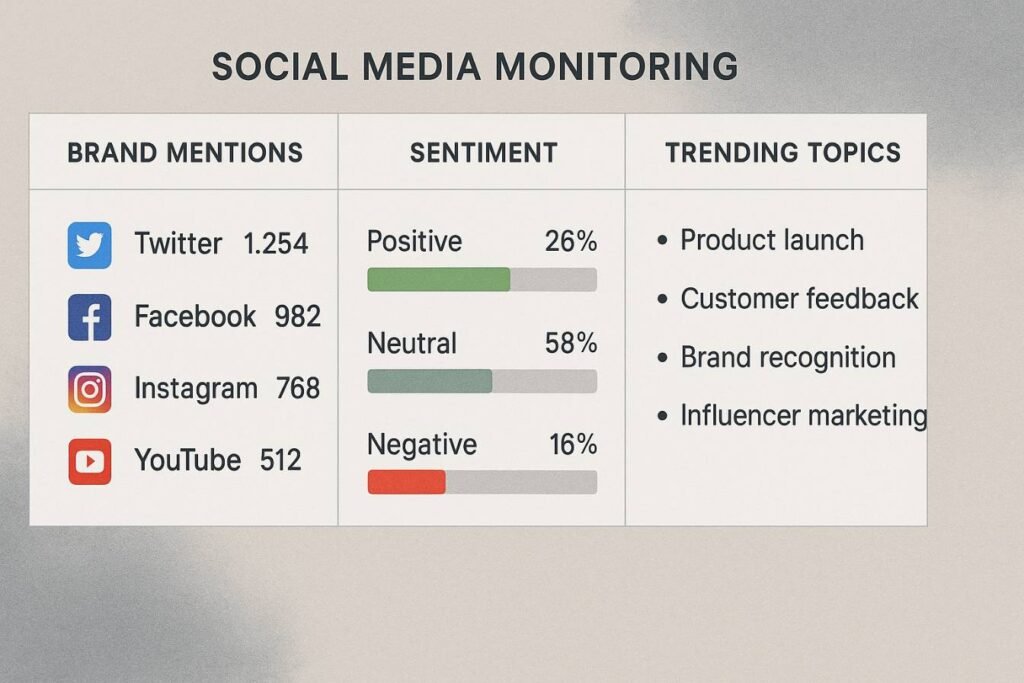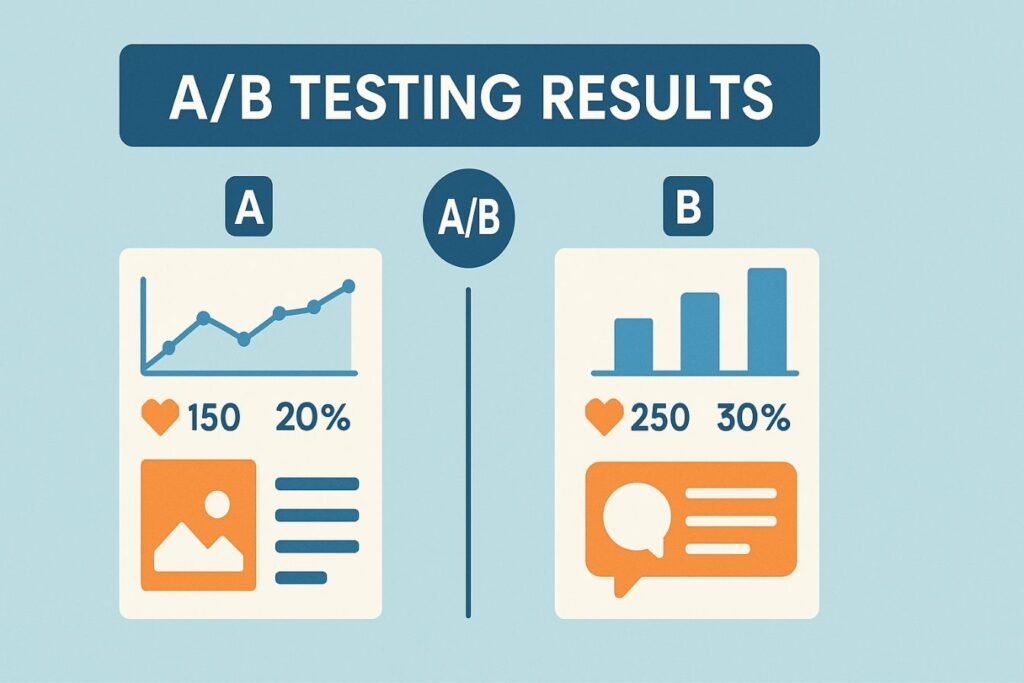A successful marketing strategy using social media requires more than just posting content regularly—it demands a data-driven approach that combines audience insights, strategic planning, and measurable outcomes. By leveraging proven frameworks like buyer personas, content pillars, and engagement metrics, businesses can create powerful social media campaigns that not only increase brand awareness but also drive traffic, boost conversions, and build lasting customer relationships. The key lies in understanding your audience deeply, choosing the right platforms, creating compelling content, and continuously optimizing based on performance data.
Understanding the Foundation of Social Media Marketing Strategy
What Makes a Marketing Strategy Using Social Media Effective?
Data-driven social media marketing is about using data and analytics to make informed decisions and improve social media strategies. Rather than relying solely on intuition, successful brands now blend creativity with concrete insights to reach the right people with the right message at the right time.
The transformation in social media marketing has been remarkable. Today’s most effective strategies are those that leverage data to understand audience behavior, preferences, and interaction patterns. This approach enables marketers to create personalized experiences that resonate with their target market, leading to higher engagement rates and better return on investment.
Moreover, social media is no longer just a space for connecting with friends; it has become the ultimate platform for growing businesses, building personal brands, and connecting with audiences worldwide. To succeed in 2025, it’s essential to stay updated with the latest trends and strategies that drive engagement and growth.
The Evolution of Social Media Marketing in 2025
The landscape of social media marketing continues to evolve rapidly. According to recent trends, 91% of marketers believe that keeping up with changes is essential for long-term success. The key trends shaping 2025 include increased use of AI in marketing, the rise of social commerce, and the growing dominance of short-form video content.
Furthermore, there’s a significant shift toward authenticity over creativity, community building and connection, and using social media as a search engine. These trends indicate that consumers now expect more meaningful interactions with brands, demanding genuine connections rather than polished but impersonal content.
Essential Components of a Marketing Strategy Using Social Media
1. Audience Research and Buyer Persona Development
Any successful social media strategy requires an understanding of your target audience. The buyer persona approach entails developing fictionalized portraits of your ideal clients, helping you learn more about your target market’s demographics, interests, problems, and aspirations.
Creating detailed buyer personas allows you to deliver relevant and captivating messages that engage your audience on a deeper level. For example, Nike has successfully applied this strategy by developing different personas such as “The Competitive Athlete” and “The Fitness Enthusiast,” then tailoring their social media content to resonate with each persona’s specific interests and motivations.
Table: Key Elements of Effective Buyer Personas
| Element | Description | Data Sources |
|---|---|---|
| Demographics | Age, gender, location, income | Social media insights, surveys |
| Psychographics | Values, interests, lifestyle | Social listening, engagement data |
| Pain Points | Challenges and problems | Customer feedback, comments |
| Social Behavior | Platform preferences, posting times | Analytics, platform insights |
| Content Preferences | Video, images, articles | Engagement metrics, shares |
2. Platform Selection and Content Strategy
Not all social media platforms are created equal, and choosing the right ones for your marketing strategy using social media is crucial. Each platform has its unique audience demographics, content formats, and engagement patterns. Therefore, you need to determine your best social platforms based on where your target audience spends their time.
Video continues to dominate social media, with platforms like Instagram, TikTok, and YouTube Shorts prioritizing video-first content in their algorithms. Whether it’s short, snappy clips or long-form storytelling, brands and influencers need to embrace video as a primary medium to capture and retain audience attention.
Additionally, personalized engagement has become key to success. Gone are the days of generic posts that speak to everyone and no one at the same time. Social media users now crave authentic and personalized interactions, making it essential to respond to comments, send direct messages, and tailor content for specific audience segments.

Strategic Frameworks for Social Media Marketing Success
The Content Pillar Strategy
One of the most effective approaches to developing a marketing strategy using social media is implementing the content pillar strategy. This framework involves creating different categories of content that support your overall marketing objectives while keeping your audience engaged with varied, valuable information.
Content pillars typically include educational content, entertaining posts, promotional materials, and behind-the-scenes glimpses. By diversifying your content across these pillars, you can maintain audience interest while achieving different marketing goals simultaneously.
The 70-20-10 Rule for Content Distribution
The 70-20-10 rule provides an excellent framework for content distribution in your marketing strategy using social media. This approach suggests that 70% of your content should be proven, low-risk material that aligns with your brand, 20% should be new ideas and formats that might become part of your regular content, and 10% should be experimental, high-risk content that pushes boundaries.
This balanced approach ensures consistent quality while allowing room for innovation and testing new strategies. It helps maintain audience engagement while protecting your brand’s reputation and providing opportunities for growth and discovery.
Social Listening and Engagement Framework
Social listening has become an integral part of modern marketing strategy using social media. This framework involves monitoring social media platforms for mentions of your brand, competitors, and industry-related keywords to gain insights into audience sentiment and market trends.
By implementing a robust social listening strategy, you can identify opportunities for engagement, address customer concerns proactively, and discover content ideas that resonate with your audience. This approach also helps you stay ahead of potential PR issues and maintain a positive brand reputation.

Advanced Tactics for Marketing Strategy Using Social Media
Leveraging AI and Automation
AI is no longer a nice bonus—it’s a must-have for marketers in 2025. AI-powered campaigns are transforming how brands connect with audiences, offering unprecedented personalization and efficiency. From chatbots that provide instant customer service to algorithms that optimize posting times, AI is revolutionizing social media marketing.
Furthermore, AI helps marketers personalize campaigns and predict what audiences want before they even know it themselves. This predictive capability allows for more targeted content creation and improved resource allocation, ultimately leading to better ROI and customer satisfaction.
Social Commerce Integration
The rise of social commerce is transforming platforms into shopping malls where the checkout button is always just a tap away. Integrating e-commerce functionality into your marketing strategy using social media can significantly reduce the friction between discovery and purchase, leading to higher conversion rates.
Social commerce features like Instagram Shopping, Facebook Marketplace, and TikTok Shop allow users to complete purchases without leaving the platform. This seamless shopping experience is becoming increasingly important as consumers expect convenience and immediacy in their online interactions.
Influencer Collaboration Strategies
Collaborating with influencers remains one of the most effective ways to boost your brand’s visibility. However, the focus in 2025 is shifting toward micro and nano influencers who have smaller but highly engaged audiences. Partnering with these creators can lead to more authentic promotion and higher ROI.
When developing your influencer strategy, consider factors such as audience alignment, engagement rates, and authentic brand fit rather than just follower count. This approach often yields better results and more cost-effective campaigns.
For businesses looking to dive deeper into platform-specific strategies, exploring a comprehensive Facebook Marketing Strategy can provide additional insights for maximizing your social media efforts.
Measuring Success in Your Marketing Strategy Using Social Media
Key Performance Indicators (KPIs)
Measuring the success of your marketing strategy using social media requires establishing clear KPIs that align with your business objectives. These metrics should be specific, measurable, and directly tied to your overall marketing goals.
Table: Essential Social Media Marketing KPIs
| Category | Metrics | Purpose |
|---|---|---|
| Reach | Impressions, reach, follower growth | Brand awareness measurement |
| Engagement | Likes, comments, shares, saves | Audience interaction tracking |
| Traffic | Click-through rates, website visits | Lead generation assessment |
| Conversion | Sales, sign-ups, downloads | ROI measurement |
| Sentiment | Brand mentions, sentiment score | Reputation monitoring |
Data Analysis and Optimization
Collecting data is only the first step; the crucial part is analyzing this data to extract actionable insights. By leveraging data effectively, your marketing decisions are backed by solid evidence, leading to better engagement, higher conversion rates, and ultimately, greater ROI.
Regular analysis of your social media performance allows you to identify what’s working, what isn’t, and where improvements can be made. This continuous optimization process is essential for maintaining competitive advantage and achieving long-term success.
A/B Testing and Experimentation
Implementing systematic A/B testing in your marketing strategy using social media helps you make data-driven decisions about content formats, posting times, and messaging. Testing different variables allows you to optimize your strategy based on actual performance rather than assumptions.
Consider testing elements such as post timing, content formats, call-to-action phrases, and visual styles to determine what resonates best with your audience. Document your findings and apply successful strategies across your social media presence.

Implementation Timeline and Best Practices
Creating Your Social Media Calendar
A well-structured social media calendar is essential for maintaining consistency and organization in your marketing strategy using social media. Your calendar should include content themes, posting schedules, campaign timelines, and important dates relevant to your industry or audience.
Planning your content in advance allows for better resource allocation, ensures consistent messaging, and provides opportunities to align your social media efforts with broader marketing initiatives. Additionally, it helps maintain a steady flow of content even during busy periods.
Tool Selection and Management
Investing in social media management tools can significantly improve the efficiency and effectiveness of your marketing strategy using social media. These tools can help with scheduling, analytics, monitoring, and collaboration, allowing you to focus on strategy and creativity rather than manual tasks.
Popular tools include Hootsuite for scheduling and monitoring, Canva for content creation, and Google Analytics for tracking website traffic from social media. Choose tools that align with your specific needs and budget while providing the functionality necessary to achieve your goals.
Future-Proofing Your Social Media Marketing Strategy
Staying Ahead of Trends
The social media landscape continues to evolve rapidly, making it crucial to stay informed about emerging trends and platform updates. Successful marketing strategy using social media requires adaptability and willingness to experiment with new features and formats.
Keep an eye on platform announcements, industry reports, and competitor activities to identify opportunities for early adoption of new trends. Being an early adopter can provide competitive advantages and help establish your brand as an industry leader.
Building Community and Fostering Relationships
Community building and connection have become central to effective social media marketing. Focus on creating meaningful relationships with your audience rather than simply broadcasting messages. Engage authentically in conversations, provide value through your content, and show genuine interest in your followers’ needs and feedback.
Building a strong community around your brand creates advocates who will promote your products or services organically, leading to increased reach and credibility. This approach also provides valuable feedback and insights that can inform future marketing strategies.

Conclusion
Developing an effective marketing strategy using social media requires a comprehensive approach that combines strategic planning, data-driven decision-making, and continuous optimization. By understanding your audience deeply, choosing appropriate platforms, creating valuable content, and measuring performance consistently, you can build a powerful social media presence that drives real business results.
The key to success lies in remaining adaptable to changing trends while maintaining focus on your core objectives. Whether you’re leveraging AI for personalization, embracing video-first content, or building authentic community connections, remember that the most effective strategies are those that prioritize genuine value creation for your audience.
As social media continues to evolve, businesses that invest in comprehensive, data-driven marketing strategies will be best positioned to thrive in the competitive digital landscape. Start implementing these frameworks today, and watch your social media efforts transform from mere posting to powerful business growth engines.
Ready to revolutionize your social media marketing? Begin by conducting a thorough audit of your current social media presence, then implement one framework at a time. Share your experiences and questions in the comments below, and don’t forget to subscribe to MarketingOWO for more cutting-edge marketing strategies that deliver measurable results.




